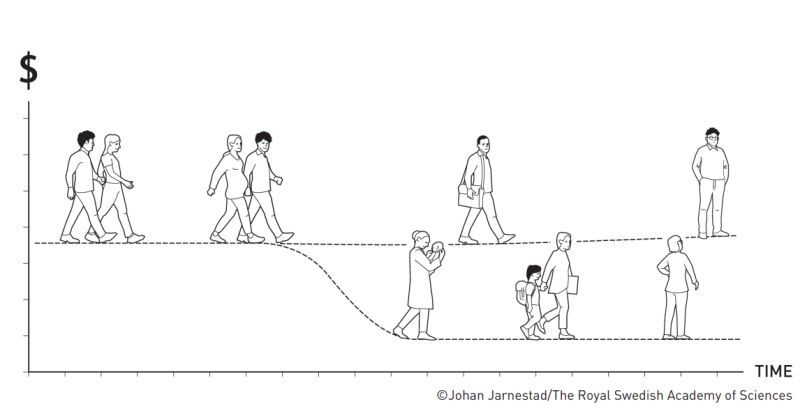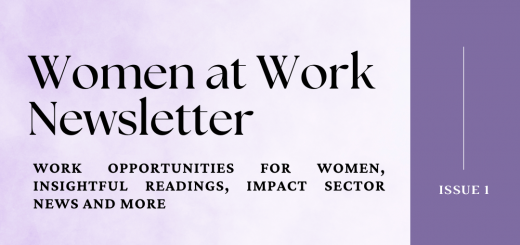Unlocking Gender Disparities in the Labor Market: A Closer Look at Claudia Goldin’s Work from an Indian Perspective
By Nidhi Tewari
An Account on Female Workforce Participation: Missing Women
Despite the proven benefits of gender equity, only one in four organizations globally prioritize the advancement of women. In a world where women often bear the double burden of unpaid work and face persistent barriers in accessing leadership positions, the issue of gender disparities across the labor markets remains a formidable challenge. Noble Laureate Claudia Goldin’s groundbreaking research offers valuable insights into the participation of women in the workforce over the past two centuries, shedding light on why gender disparities persist, even when women’s education has witnessed increased outcomes across the globe.
Goldin’s work, primarily centered on the United States, holds relevance far beyond its borders. Here are some key findings from her research:
1. Price to Pay for “Temporal Flexibility”
Goldin’s research points out that women often pay a high price for “temporal flexibility.” This flexibility involves women working fewer or more flexible hours to accommodate family responsibilities. Unfortunately, this choice comes at the cost of a wage gap. The way society assigns traditional roles forces women into domestic duties and limits their opportunities in the job market, leaving them with fewer options. In India, despite rising levels of education among women, the number of women in the workforce has yet to increase significantly. The concept of temporal flexibility plays a crucial role here. Women who opt for reduced working hours or flexibility to manage family commitments often experience a wage gap or get pushed out of the workforce.
“When it comes to hiring of women, for programmatic roles that require more field work or in the case of post-maternity break re-entry, organizations can sometimes have inhibitions, rigidity or rather what can be called an ‘avoidance bias’. A systemic change is sought in this direction and the primary catalyst for this transformation lies in the proactive intent of leadership to instigate and drive change” – Rahul Balakrishnan, Co-Founder, Arthan
2. The Impact of Childbirth on Pay Disparity
A study of female workforce participation of working mothers found that 71% of women with kids under 18 were either employed or actively seeking employment. Balancing the often conflicting needs of work and family can be quite demanding for mothers, leading to work-family conflicts, especially when women have limited resources to address the demands of their work and family roles. Studies also show that the likelihood of mothers being employed one-year post-childbirth was influenced by several factors such as the availability of paid maternity leave. On the contrary, women who took paid maternity leave had a 2.7 times higher chance of being employed one year after giving birth. At Arthan and Women at Work, we found that career breaks often lead to pay disparity because pay hikes are calculated basis of the last drawn salary, and when there is a maternity break that time is not accounted for. While some organizations have tried expanding access to childcare facilities and implementing flexible work programs, our study shows that gender inclusion initiatives often progress slowly. Overcoming this inertia requires ongoing leadership support and guidance for organizations to achieve gender-related goals.
3. The Decline in Female Labor Force Participation Rate (FLFPR)- Biases and Dichotomies
Goldin’s work holds substantial importance for India, where the Female Labor Force Participation Rate (FLFPR) has steadily declined over the past two decades. Although there have been recent efforts to re-recruit women in mid-career, two critical gaps still need immediate attention- The gap between male and female labor participation rates (currently at 56% and 28%, respectively). The gender pay gap persists despite women and men performing the same activities. A study by Sattva on the gender wage gap in India shows that the difference between the average monthly wages among men and women in India, i.e. the wage gap, is about INR 4,014. On average, men earn INR 12,048 per month while women earn INR 8,034, i.e. about 33% less than men.
At Women at Work, our research within the Indian development sector revealed that women encounter obstacles such as motherhood, childbirth, and care responsibilities, which hinder their participation in the workforce. Due to a lack of support from organizations, women often leave the workforce. Additionally, frequent exits result from high attrition rates. Women encounter difficulty securing new jobs due to underlying biases within workplaces. This underscores the pressing need for specialized platforms catering to women job seekers. Women at Work is proactively constructing a dedicated job-seeking platform to alleviate the challenges women encounter during the hiring process.
The Road to Gender Equality at Workplace- Indian Perspective
Addressing gender gaps and striving for gender equity, is not just about ‘Morality’, it is known to enhance organizational productivity, control attrition, and even increase sectoral outputs. Claudia Goldin’s research, focusing on the consequences of family-related work choices and their impact on women’s careers, supports India’s efforts to bridge these disparities.
According to the female-focused results of Mercer’s 2021 India Total Remuneration Survey (TRS), in the technology sector, female representation was 43 percent at the entry-level. However, it reduced significantly to 12-17 percent at the managerial level and was 4 to 8 percent at the executive level. Even in sectors where women are better represented in entry-level roles, there are still fewer women in leadership. This may allude to the biases women face as they progress up the career ladder and lead to the conclusion that work is still “delivered by women and led by men!”
Learnings for the Indian Development Sector
Understanding the staggering gaps in Women’s leadership in India, the Women at Work initiative at Arthan strengthens women’s leadership in the development sector and builds capacities within organizations to set and achieve their gender integration goals. We conducted a research study in 2023 to understand women’s leadership and gender integration challenges with 70 organizations in the Indian development sector. Goldin’s work on gendered workforce participation finds parallels in this sector. Here are some valuable insights from our study:
1. Care and Maternity Support
In the Indian Development sector, women’s work participation is relatively higher. However, we discovered significant gaps in the care and maternity support of organizations within the sector. Although 98% of organizations in our study complied with the 26-week mandatory maternity leave policy, there was a lack of consideration for paternity leave. This further burdens women with the responsibilities of childcare and rearing. Additionally, biases within organizations were evident; women with young children were often overlooked for certain roles or not hired for them at all. While the sector shows higher female participation overall, an intersectional view reveals structural obstacles and biases that lead to women being sidelined from the workforce. It’s essential to address these issues as a considerable portion of today’s workforce comprises mothers balancing career and family responsibilities.
2. Mental Health Support
Ensuring women’s mental well-being is vital for workplace gender equity. Our research highlights the damaging impact of workplace biases, microaggressions, and caregiving responsibilities on women’s mental health. Gendered discrimination and limited growth opportunities also affect their well-being due to existing societal inequalities.
To tackle these challenges, we recommend two solutions. Firstly, implementing organizational behavior interventions, including gender sensitization, addressing unconscious bias, and fostering inclusive language, can create supportive work environments. Secondly, practical measures like compassion leaves and compressed work hours can significantly aid women in managing their mental health at work. Integrating these strategies can create more supportive workspaces for women.
3. Focus on Gender Audits
In our research within the development sector, only 20% of organizations conducted gender audits. We noticed that while many expressed the intention to pursue gender integration, there was a lack of clear vision on how to execute it. Conducting gender audits and assessing budget responsiveness to gender are critical. This approach aids in pinpointing disparities and facilitating specific interventions for gender inclusivity. It serves as a means for organizations to self-scrutinize their gender integration policies.
The Women at Work initiative strongly advocates for gender auditing and policy analysis within organizational structures to ensure alignment between intent and impact. To assist organizations in fostering gender inclusivity, Women at Work offers an Organizational Development Programme. This initiative delivers tailored interventions such as workshops, policy reviews, training programs, and guidance for achieving gender integration within organizational frameworks.
Conclusion
Research consistently shows that organizations excelling in gender equity achieve higher performance and boast contented employees. McKinsey’s analysis emphasizes that companies with more women in top positions demonstrate nearly 50% greater share performance and profits than those with fewer women in leadership roles. At Women at Work, we acknowledge gender disparities in the development sector and strive for gender equity through organizational development. Addressing persistent biases is crucial, necessitating fair treatment for women in every aspect of work. At Arthan and Women at Work, our aim is to foster an inclusive hiring process, eliminate biases, and cultivate gender-inclusive workplaces by fortifying internal structures and nurturing inclusive cultures. By embracing insights from Claudia Goldin’s work and actively addressing these gaps, it’s pivotal to continue driving change both at individual and organizational levels, unlocking the complete potential of the workforce and upholding sustainable gender equality.


